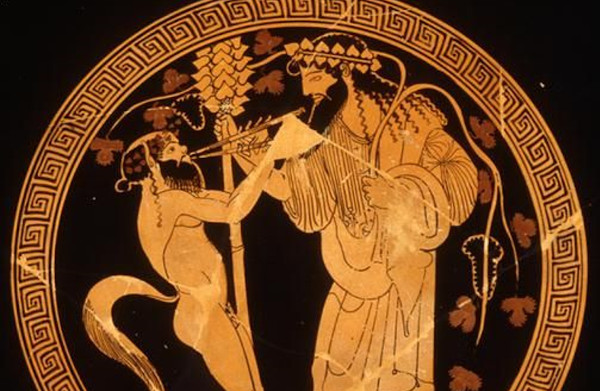Understanding gender and sexuality through Dionysus
Posted on: 23 March 2020 by Kian Goodsell in 2020 posts

Ancient History and International Politics and Policy student Kian Goodsell illustrates how the figure of Dionysus serves as an example of sexual and gender fluidity in the ancient world.
The LGBTQ+ community in the contemporary age consistently faces countless adversities from oppressive figures that aim to supress the rights of its members. This is expressed in media outbursts from the likes of Katie Hopkins and Boris Johnson, or the imposition of legislation that prohibits same sex marriage or transgender troops to serve in the US military. In this regard, many may claim that human progress is taking a step back to the “old days”, but to what extent is this true? The ancient world more often than not celebrated, and even normalised, gender and sexual fluidity and this can be particularly highlighted through the figure of Dionysus.
Dionysus, the god of wine and fertility, was thought to have the ability to drive men to madness, as seen particularly vividly in Euripides’ Bacchae. Ancient sources emphasise Dionysus’ desire to transform his followers into his own image. With his worshippers ranging from Maenads to Satyrs, the distinguishing factor from other deities is that Dionysus’ supporters challenge conventional polarised gender ideology. While these belong to the realm of myths and are certainly exaggerated, one should still acknowledge that ancient writings on polymorphism are relevant to contemporary non-binary recognition. The cult of Dionysus in both myth and real life illustrates how differences in identity can be celebrated through harvest and unity. Such notions have been transplanted into the modern context, with the growing support of gay pride universally demonstrating how the diverse members within the LGBTQ+ community rally together to recognise differences, support and celebrate the right to love whomever.
There is a marked difference between the ancient and contemporary understanding of gender and sexuality. Whilst we are not entirely sure of how ancient audiences perceived and understood these themes, it can be said that their attitude was at least partly reflected in the appraisal of Dionysus and his different forms, or identities, in literature. Yet, current opinions seem to stigmatise and disregard such identities. As of the present day, 60% of bisexual individuals have reported experiencing biphobia in the workplace and further studies show a sharp rise in mental illness amongst the LGBTQ+ community. Similarly, with 31 States in the US still permitting the use of conversion therapy, ideas of fluid gender and sexuality that once gained praise and support within the cult of Dionysus, have been met with varying levels of resistance in the contemporary world, demonstrating the gap between the two eras.
Society has clearly progressed in many ways as far as the discussion around gender and sexuality is concerned, but there is still work to be done. With such themes being heavily embedded in our history, humanity should look to the past, in an attempt to gain greater understanding of gender and sexual expression. In doing so, we have the ability to eradicate oppressive ideologies surrounding these ideas and to look into a brighter future.
Discover more
Study in the Department of Archaeology, Classics and Egyptology at the University of Liverpool.
Keywords: gender, archaeology, classics, egyptology, sexuality, Ancient Greece, god, LGBTQ+, University of Liverpool, Equality, Diversity and Inclusion.